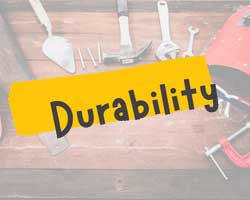So you’ve decided to get into kayaking; congrats! Kayaking is a great way to enjoy the outdoors and get some exercise. And when it comes to choosing a kayak for your next adventure, you might be wondering whether an inflatable kayak or a hard kayak would be best for you! To be frank, choosing an inflatable kayak vs a hard kayak depends on how you will use it.

Both inflatable and hard kayaks have their own advantages and disadvantages. So it’s important to consider what would work best for you before making a decision.
Inflatable kayaks are often more affordable than their hard counterparts, and they’re also easier to transport and store. However, they can be more difficult to paddle and are more susceptible to punctures and leaks.
Hard kayaks, on the other hand, are typically more stable and durable, they are made of sturdy material, typically fiberglass, that can withstand bumps and scrapes. They are also very stable in the water and provide good tracking, making them a good choice for paddlers who want to explore lakes and rivers.
Hardshell kayaks are also generally more comfortable to paddle in because they have more space inside and better weight distribution. But they can be more expensive and heavier to transport.
In this article, we are going to present the ultimate comparison between an inflatable vs a hard kayak. So that you can find which one is best for you, let’s find out which one is best for you;

Jump To A Section
The Ultimate Comparison Between Inflatable Vs. Hard Kayak
Inflatable kayaks have been around for years, but they’ve only recently become mainstream. Hard kayaks have been the go-to choice for serious kayakers, but inflatable kayaks offer a number of advantages that make them a viable option for anyone who wants to get out on the water.
Let’s have a look at the detailed comparison;
Materials
Inflatable kayaks are made from a variety of materials, but the most common is PVC. PVC is a strong, durable material that is resistant to punctures and UV rays. It’s also lightweight and easy to transport, which is a major advantage over hardshell kayaks.
Some inflatable kayaks are made with a material called Hypalon. Hypalon is a synthetic rubber that is even more durable than PVC. It’s often used in the construction of inflatable boats and rafts.
On the other hand, hard kayaks are usually made from fiberglass, polyethylene, or a composite material like Kevlar. Fiberglass is the lightest and strongest of these materials, but it’s also the most expensive. Polyethylene is heavier than fiberglass, but it’s more durable and resistant to UV rays. Kevlar is the strongest and lightest of the composite materials, but it’s also the most expensive.
Durability

It’s a question that gets asked a lot, which is more durable, an inflatable vs a hard kayak? The answer is not as simple as one might think, and in fact, there are pros and cons to both types of kayaks when it comes to durability.
Let’s start with hard kayaks. These are often made out of materials like fiberglass or polyethylene and, as a result, are much more resistant to wear and tear than their inflatable counterparts.
This means that hard kayaks are going to last you a lot longer, especially if you take good care of them. However, they are also more expensive and can be a bit more difficult to transport.
Inflatable kayaks, on the other hand, are much lighter and easier to transport but are not as durable. They are made out of materials like PVC or nylon and can be punctured or torn quite easily.
However, they are also much less expensive and can be a great option for those on a budget. So, which is the better option?
It really depends on what you plan to use your kayak for. If you are an experienced paddler who takes good care of your gear, then a hard kayak is probably the better choice.
However, if you are new to kayaking or are on a budget, then an inflatable kayak might be the way to go vs a hard kayak.
Stability

When it comes to stability, there is a common belief that hard kayaks are more stable than inflatable kayaks. But is this really the case?
To get to the bottom of this, we need to first understand what stability actually is. Stability is the ability of a kayak to resist tipping over in the water. This is important because if a kayak tips over, it can fill with water and sink, which can be dangerous (and even deadly).
There are two main types of stability: primary and secondary. Primary stability is the stability of a kayak when it is stationary in the water. Secondary stability is the stability of a kayak when it is moving through the water.
So, what does this all mean in terms of inflatable and hard kayaks?
Well, it is true that hard kayaks generally have better primary stability than inflatable kayaks. This is because hard kayaks are more rigid and therefore don’t rock back and forth as much when you’re getting in and out of them.
However, when it comes to secondary stability, inflatable kayaks actually have an advantage over hard kayaks. This is because inflatable kayaks are more flexible and therefore are less likely to tip over when they’re moving through the water.
In short, hardshell kayaks are more stable than inflatable kayaks. This is because they are heavier and more rigid, making them less likely to tip over in strong currents or rough water. They are also more resistant to wind and weather.
On the other hand, inflatable kayaks are not as stable as hard kayaks and are more likely to tip over in strong currents or rough water. They are also more susceptible to wind and weather.
So, there you have it! The thing is, when it comes to stability, both inflatable and hard kayaks have their own advantages and disadvantages. It really just depends on what you’re looking for in a kayak and what your personal preferences are.
Stability in the wind
Inflatable kayaks are a great way to get out on the water, but they can also be a bit tricky to handle.
Inflatable kayaks can be unstable in the wind, so be sure to keep an eye on the weather conditions before you head out. If it’s a windy day, be careful not to put too much pressure on the side chambers or the pontoons. Otherwise, you might find yourself capsized.
Here are a few tips to help you keep your inflatable kayak safe and stable while you’re out on the water.
If you do tip your kayak over, don’t panic! Most inflatable kayaks have self-bailing systems that will help you right the kayak. If your kayak doesn’t have a self-bailing system, you can try to get it upright by paddling on one side and using your body weight to help stabilize the kayak.
Try to keep your weight evenly distributed, and paddle on opposite sides of the kayak to help keep it stable.
Comfort

Inflatable kayaks have many advantages over hard kayaks. They’re more portable, lighter in weight, and often cheaper. But when it comes to comfort, hard kayaks have the edge.
Most inflatable kayaks are designed for recreational use, not long-distance touring or expeditions. That means they’re not as comfortable as hard kayaks, which are designed with those activities in mind.
Hard kayaks have more room for your legs, and their seats are usually more comfortable. They also have better back support, so you can paddle for longer periods without getting sore.
If you’re planning on doing any serious kayaking, a hard kayak is a better choice. But if you just want to get out on the water for a leisurely paddle, an inflatable kayak is a great option.
Maneuverability

While both types of kayaks have their own unique benefits, it is generally agreed upon that inflatable kayaks are easier to maneuver than hard kayaks.
Inflatable kayaks have a wide hull that makes them easier to maneuver around hairpin turns. However, they don’t retain their rigidity when deflated, which can make them slower and harder to control. Because of this, they’re not as easy to paddle as hardshell kayaks.
Here is a closer look at the reasons why this is the case:
Inflatable kayaks are lighter weight
One of the main reasons why inflatable kayaks are easier to maneuver is because they are lighter in weight. This means that they require less effort to move around in the water. Hard kayaks, on the other hand, can be quite heavy and difficult to move.
Inflatable kayaks have more flexible hulls
Another reason why inflatable kayaks are easier to maneuver is that their hulls are more flexible. This means that they can contour to the waves and currents around them more easily. Hard kayaks have rigid hulls that can make it difficult to maneuver in certain types of water conditions.
Overall, inflatable kayaks are easier to maneuver than hard kayaks. This is due to their lighter weight, more flexible hulls, and more storage space. If you are trying to decide between the two, then an inflatable kayak is probably the better option for you.
Maintenance

Inflatable kayaks are a great option for those looking for an easy-to-maintain watercraft. While they do require some basic care, they are much easier to take care of than their hard kayaks. However, there are still some things you need to do to keep your kayak in good shape.
Here are a few tips on how to properly take care of your inflatable kayak. One of the most important things to do is to store your kayak in a cool, dry place when not in use. This will help to prevent mildew and mold from growing on the kayak. It is also a good idea to clean the kayak on a regular basis with a special cleaner made for inflatable kayaks.
Another important tip is to carry a repair kit with you in your toolbox. This way, if you do happen to puncture your kayak, you will be able to easily fix it.
Finally, it is important to cover your kayak when not in use. This will help to protect it from UV rays and other potential damage.
By following these simple tips, you can help to ensure that your inflatable kayak will last for many years to come.
Advantages and Drawbacks Between Inflatable Kayaks And Hard Kayaks
So, which one is best for you, an inflatable kayak or a hard kayak? There are some advantages and drawbacks to consider when picking one between an inflatable and vs hard kayak.
First, think about where you’ll be paddling. If you’re planning on paddling in calm waters, an inflatable kayak might be a good option. Inflatable kayaks are lighter and easier to transport than hard kayaks, so they’re a good choice for kayakers who want to explore different bodies of water.
If you’re just starting out, an inflatable kayak might be a good option.
If you’re planning on paddling in rougher waters, a hard kayak might be a better option vs an inflatable kayak. Hard kayaks are more durable and stable in choppy waters. They’re also a good choice for kayakers who want to go on longer trips since they’re less likely to tip over.
1
Inflatable vs hard kayak, which one is more portable?
One of the main reasons people purchase an inflatable kayak is because of its portability.
Inflatable kayaks are much lighter weight than traditional kayaks, making them easier to transport from one body of water to another. They also have the ability to be packed up and stored in a small space, making them ideal for those who don’t have a lot of storage space.
Although hard kayaks are faster and easier to paddle in open water, they are more difficult to transport and require more storage space.
If you’re trying to decide between an inflatable kayak vs a hard kayak, it’s important to consider how you’ll be using the kayak. If you’re mostly interested in portability, then an inflatable kayak is probably the best option.
However, if you’re planning on spending a lot of time on the water, then a traditional kayak might be a better choice. There are pros and cons to both types of kayaks, so it’s important to decide what’s most important to you before making a purchase.
2
Inflatable vs hardshell: Which one is cheaper?
Although inflatable kayaks are cheaper in price, they are not as durable as hardshell kayaks. Inflatable kayaks tend to puncture or break more easily than hardshell models, which makes them more likely to sink or become damaged. A hard kayak also requires more maintenance and is more likely to be damaged by an impact.
So, which one is cheaper in the long run? It really depends on how you use your kayak and how often you go kayaking. If you are an experienced kayaker who takes your kayak out on long trips or in rough waters, then a hardshell kayak is probably a better investment.
However, if you are a beginner or only go kayaking occasionally, then an inflatable kayak may be a better option for you than a hard kayak.
3
Inflatable vs hard kayak, which one is easy to store?
Hard kayaks are, well, hard. They’re made of solid materials like fiberglass or plastic, which means they’re not exactly easy to store or transport. You need a place to keep them safe and sound when you’re not using them, and you need a way to transport them from place to place. This can be a bit of a hassle, to say the least.
Inflatable kayaks, on the other hand, are much easier to store and transport.
You can just deflate them and put them in a closet or under the bed! Hard kayaks are much more difficult to store. You have to find a place to put them where they won’t get damaged and where they won’t be an eyesore.
And when it’s time to hit the water, all you have to do is inflate them, and you’re good to go. No hassle, no fuss.
So, if you’re looking for a kayak that’s easy to store and transport, an inflatable kayak is definitely the way to go vs a hard kayak.
4
Inflatable vs hard kayak: Which one is faster in speed?
Inflatable kayaks are great for many things. They are easy to transport and store, and they are very versatile. However, when it comes to speed, hard kayaks are the clear winner.
Hard kayaks are faster because they are more aerodynamic. They slice through the water more easily and with less resistance. This means that you can paddle harder and longer without tiring yourself out.
Inflatable kayaks, on the other hand, are not as streamlined. They are wider and have more drag. This makes them slower than hardshell kayaks.
So, if you’re looking for a kayak that is fast and stable, then a hard kayak is definitely the way to go. They may be more expensive than inflatable kayaks, but they are definitely worth the investment if you want a kayak that is fast and stable.
5
Which one is easier to paddle, an inflatable kayak or a hard kayak?
If you’re new to kayaking, you might be wondering which type of kayak is easier to paddle. Is it an inflatable kayak or a hard kayak?
The answer really depends on a few factors, including your personal preferences and the type of kayaking you’ll be doing.
In general, hard kayaks are easier to paddle than inflatable kayaks. They’re more stable and track better in the water. However, they can be more difficult to transport and store.
Inflatable kayaks are more portable and can be stored in a smaller space. They’re also usually lighter and easier to carry. However, they’re not as stable as hard kayaks and can be more difficult to paddle in windy conditions.
So, which type of kayak is right for you? It really depends on your individual needs and preferences. If you’re just starting out, an inflatable kayak might be a good option vs a hard kayak. If you’re an experienced kayaker, you might prefer a hard kayak.
Whichever type of kayak you choose, make sure you take the time to learn how to paddle properly. Kayaking is a great way to explore the outdoors and get some exercise, but it’s important to be safe. Always wear a life jacket and follow all safety guidelines.
6
Which one can be damaged easily?
Of course, no kayak is completely immune to damage. Even the strongest hard kayaks can sustain damage if they’re not properly cared for. But inflatable kayaks are more likely to be damaged than hard kayaks.
The biggest threat to hard kayaks is sunlight and UV damage. If you leave your hard kayak out in the sun for too long, the UV rays can weaken the hull and make it more susceptible to damage. That’s why it’s important to store your hard kayak in a cool, dark place when you’re not using it.
Inflatable kayaks, on the other hand, are more vulnerable to punctures and other types of damage. That’s because they’re made of softer materials that can be easily punctured or torn. So if you’re planning on taking your kayak out on rough waters, it’s best to choose a hard kayak over an inflatable one.
In the end, it’s up to you to decide which type of kayak is right for you. If you’re looking for a kayak that’s less likely to be damaged, a hard kayak is best for you. But if you’re willing to take on a little more risk, an inflatable kayak might be the better choice.
7
Inflatable kayak vs hard kayak: Which one is for beginners?
If you’re new to kayaking, you might be wondering which type of kayak is right for you.
An inflatable kayak is probably your best bet when you are just starting out! These kayaks are easy to transport and set up, and they’re also very stable, making them ideal for beginners.
Most inflatable kayaks can be inflated in just a few minutes, so you can be on the water and enjoying yourself in no time. They’re also generally more affordable than hardshell kayaks.
However, inflatable kayaks do have a few downsides. They’re not as durable as hardshell kayaks and can be punctured easily. They also don’t track as well in the water and can be more difficult to paddle in windy conditions.
But remember, hardshell kayaks are also generally faster and easier to paddle than inflatable kayaks. They track better in the water and are less affected by windy conditions, and are ideal for longer trips. However, hardshell kayaks can be more expensive than inflatable kayaks and can be difficult to transport and set up.
Which one is more buoyant?
An inflatable kayak is more buoyant than a hard kayak. This is because inflatable kayaks are made with a material that is less dense than water. This means that when you are in an inflatable kayak, you are actually floating on top of the water rather than sinking into it.
Hard kayaks, on the other hand, are made out of a material that is denser than water. This means that when you are in a hard kayak, you are actually sinking into the water.
Weighing in at only 34 pounds, the Intex Excursion Pro is one of the lightest and most portable inflatable kayaks on the market. It’s also one of the most versatile, with the ability to seat one or two people and accommodate up to Class III whitewater.
But the best feature of the Intex Excursion Pro kayak is its incredible buoyancy.
Now that you’ve gone through the ultimate comparison between an inflatable vs a hard kayak, and considered all of these factors, you should have a better idea of whether an inflatable kayak or a hard kayak is best for you. Besides, you can have a look at our take on kayak buying guide. And if you still can’t decide, let us know.


